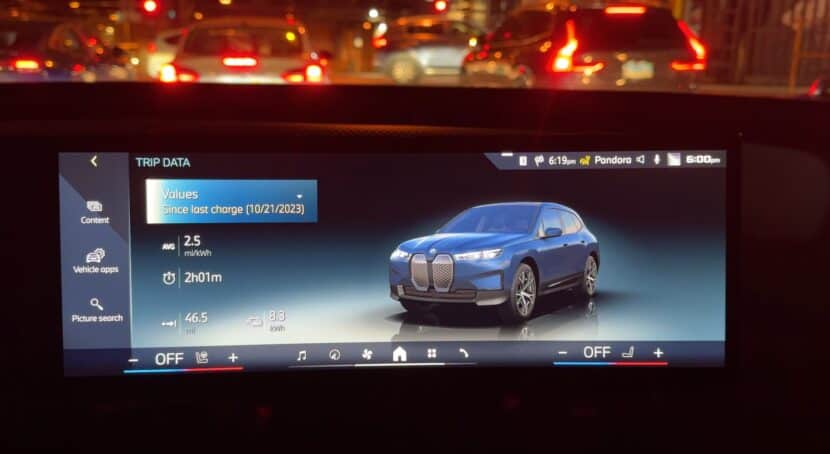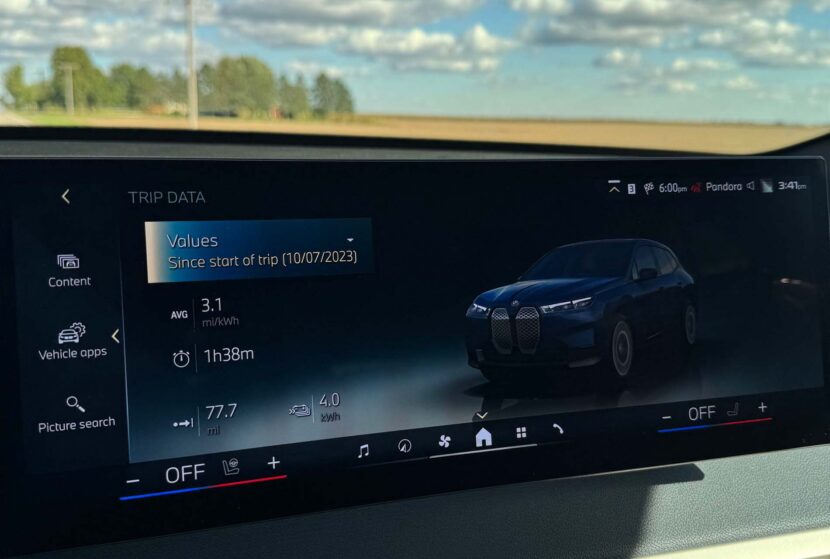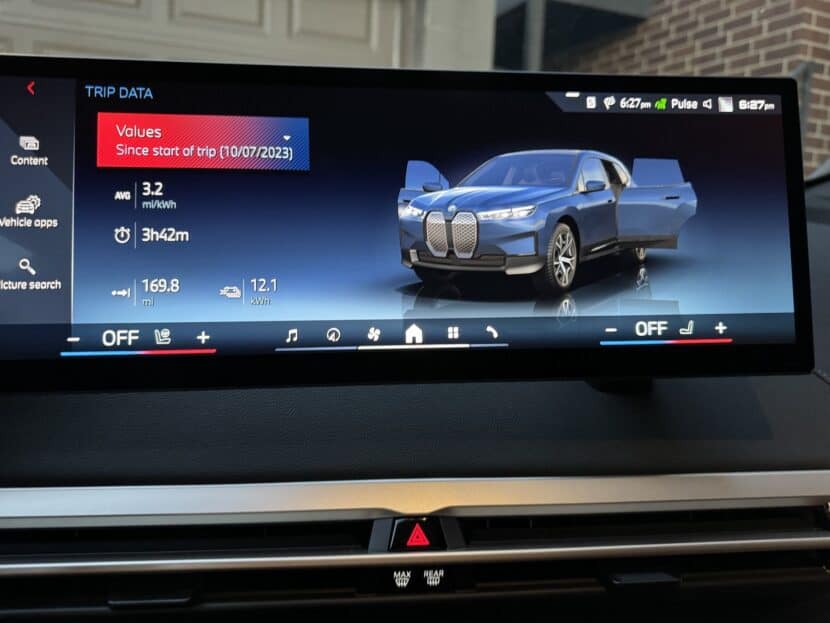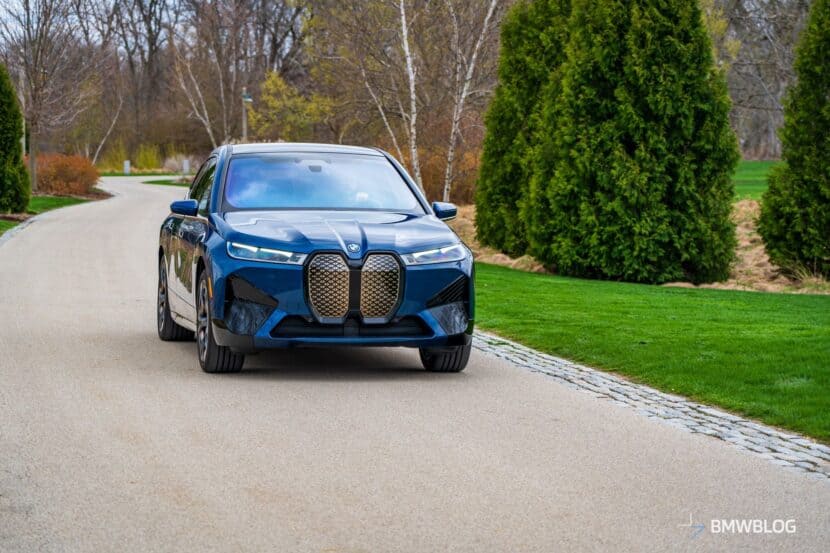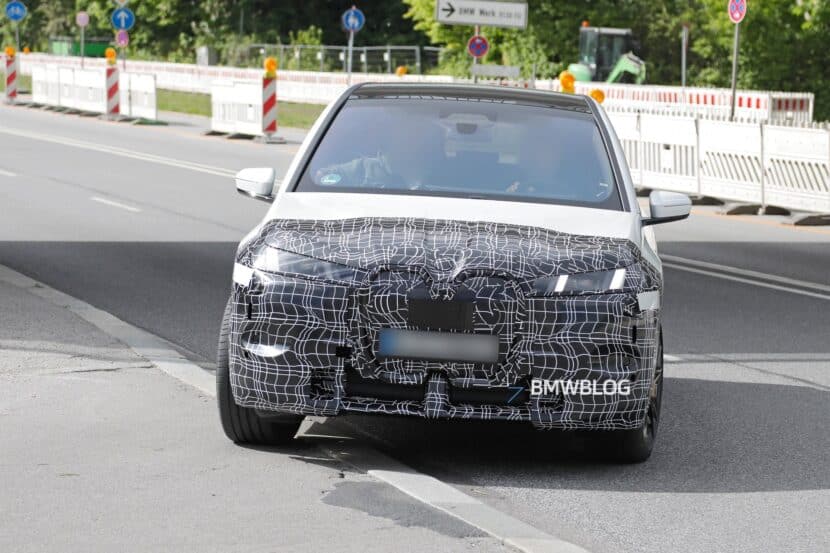In our ongoing series of living with the 2024 BMW iX M60, we set out to test its efficiency in both urban and highway driving scenarios. Over the last few weeks, we put nearly 900 miles on the car, mostly in a fall setting with optimal temperatures. We currently use the iX M60 as a daily driver, but with the occasional longer road trips. One of those 300-mile road trips provided an interesting evaluation of the car’s efficiency while driving predominantly on flat terrains and highways, with speeds ranging up to 70-75 mph. There was also a mix of backroads with speed limits up to 55 mph. Our 2024 BMW iX M60 is equipped with 22-inch wheels, boasting an EPA-rated range of 274 miles. But as we learned from the iX xDrive50, BMW seems to underrate its electric range performance.
City Driving Efficiency: A Mixed Bag
In city driving, we observed an average energy consumption of 2.5 k mi/kWh, with mostly stop-and-go traffic. Chicago is quite famous for that. This relatively high figure can be attributed to the iX M60’s weight and the energy demands of stop-and-go driving, despite trying to maximize the brake regen by using as much as possible the B Mode (one-pedal driving). Adopting a conscious driving approach, we used the Efficient Mode for half the time, alternated between adaptive D and B modes, and minimized air conditioning usage unless necessary. While Efficient Mode limits the performance of the climate control system, we found it essential to maintain cabin comfort, especially during warmer months.
With a usable battery capacity of 105.2 kWh, the BMW iX M60 offers an estimated electric range of around 263 miles. Optimizing our driving experience by consistently utilizing Efficient Mode, keeping the B mode engaged, and refraining from using the AC could potentially extend this electric range even further.
Highway Driving Efficiency: A Brighter Picture
On the highway, the BMW iX M60’s efficiency improves noticeably. With a consistent speed of around 70 mph, AC set at 70°F, and two passengers and two children on board, we achieved an energy consumption of 2.9 mi/kWh. The total electric range would then be around 305 miles. Interestingly, the quick acceleration bursts did not significantly impact the overall efficiency, challenging the conventional belief that gradual acceleration is always more energy-efficient. But again, these tests are hardly scientific.
This last stretch of the road trip (170 miles) took us from the countryside of Illinois and into Chicago Downtown. On this trip, we drove mostly in Efficient Mode with the Max Range feature enabled. The Max Range Mode reduces motor output, capping the top speed at 56 mph, and foregoing creature comforts such as climate control and seat heaters. BMW anticipates a potential increase in the remaining range by approximately 25 percent. We achieved an efficiency of 3.2-3.3 mi/kWh for a total of 336-348 miles, considerably higher than the rated EPA range.
Contrasting City and Highway Efficiency
The stark contrast between city and highway efficiency highlights the iX M60’s sensitivity to driving conditions. The stop-and-go nature of city driving seems to demand more energy, while the consistent speed and regenerative braking potential of highway / backroads driving contribute to improved efficiency. The weight that seemed to impede city efficiency appears to contribute positively to highway stability and economy. The aerodynamic design and optimized energy consumption during consistent cruising play pivotal roles in enhancing the iX M60’s efficiency on highways.
Of course, we look forward to the winter and cold season to see where the iX M60 stands, especially now that we have a good baseline. And Chicago will certainly give us plenty of opportunities to test different driving scenarios, including the no heating cabin option, something we’re familiar with from the BMW i3.



